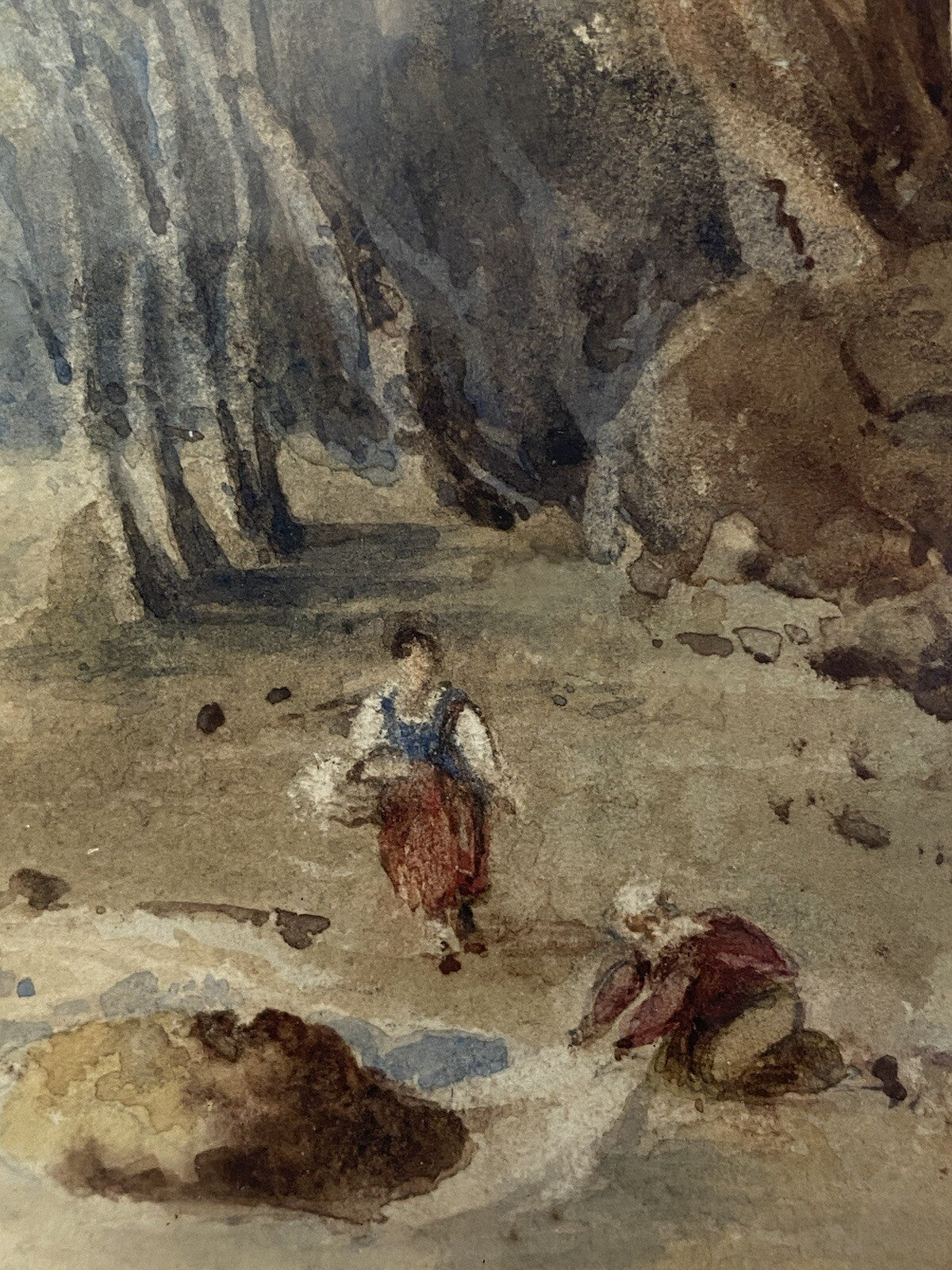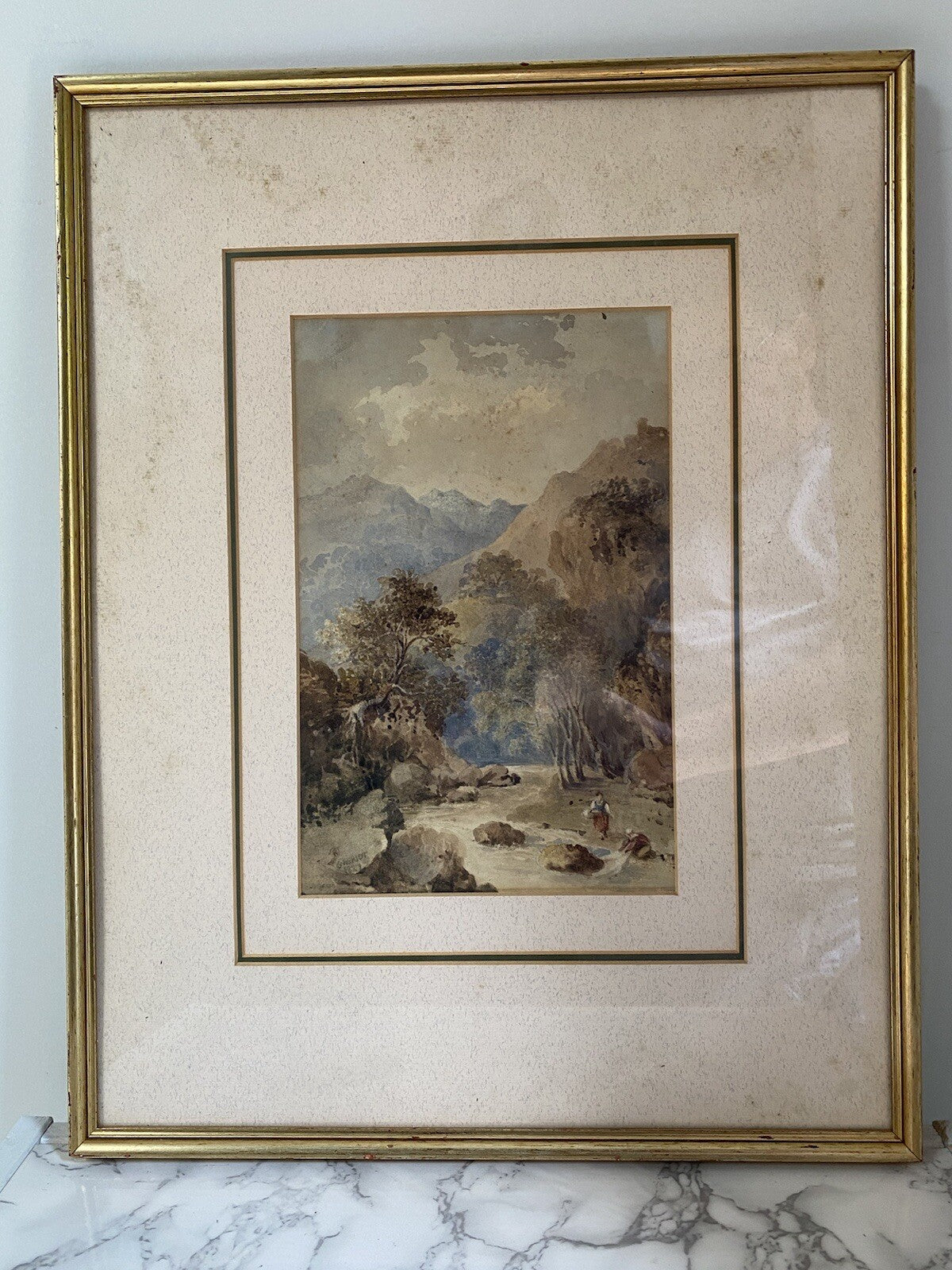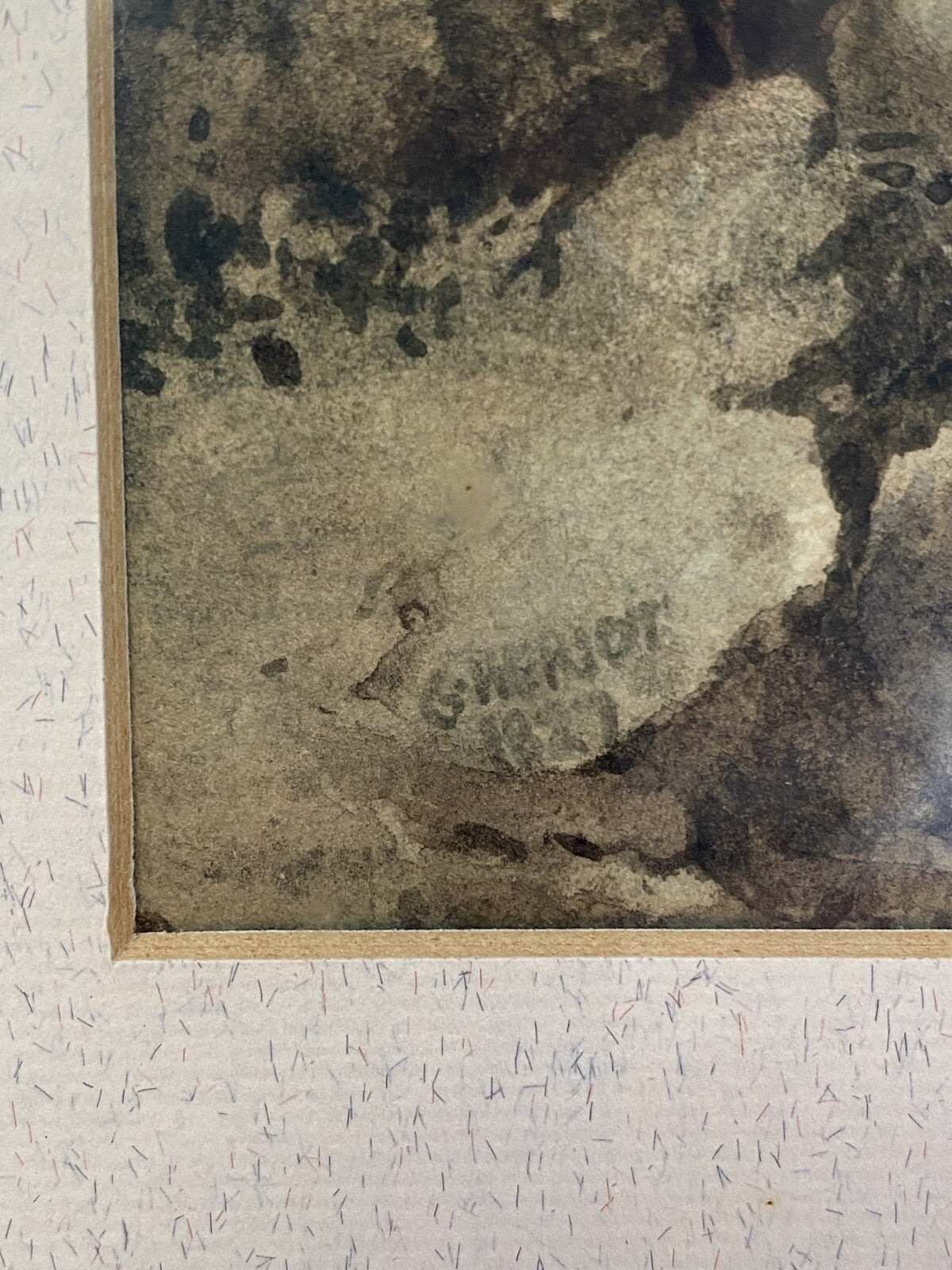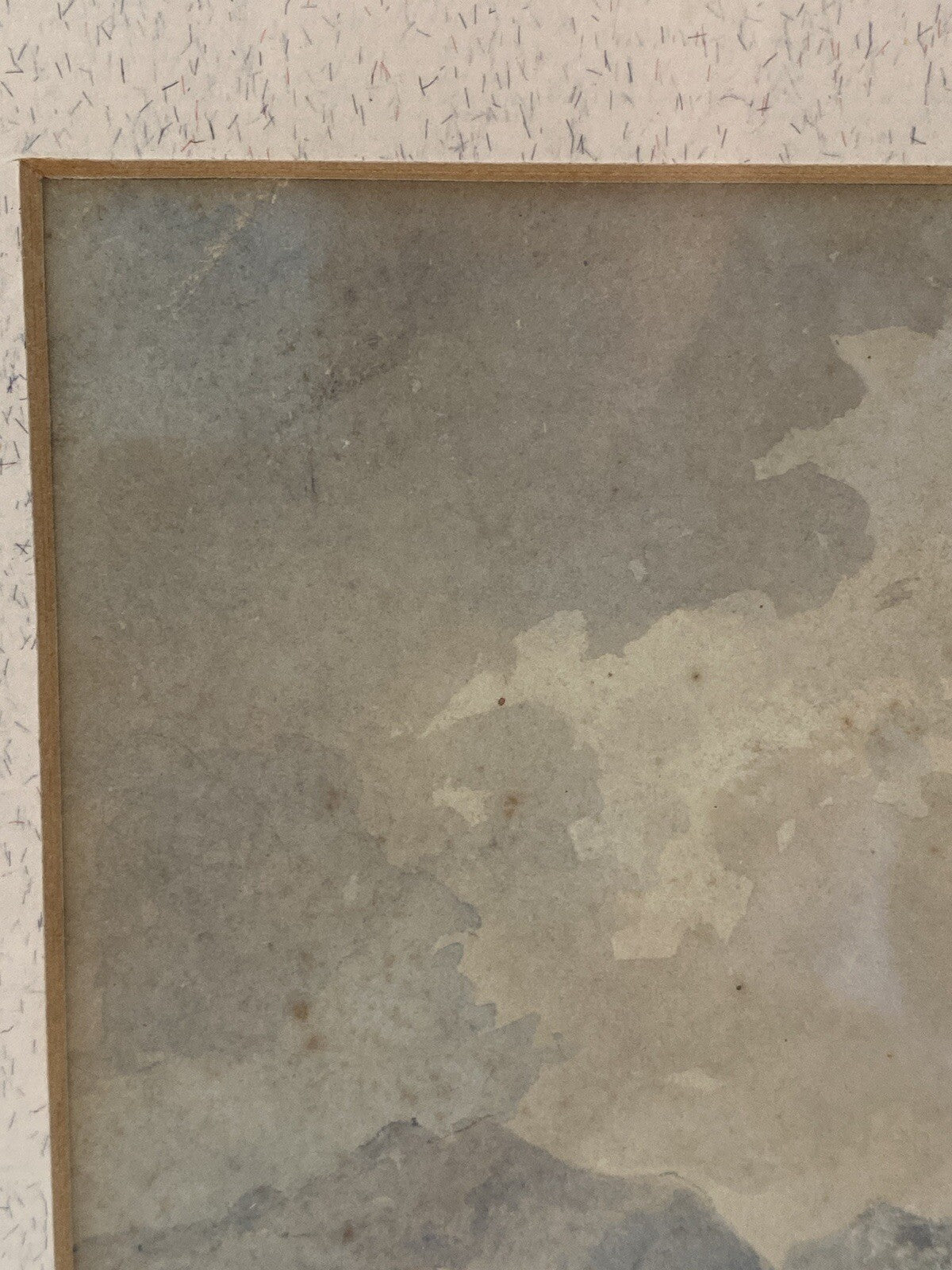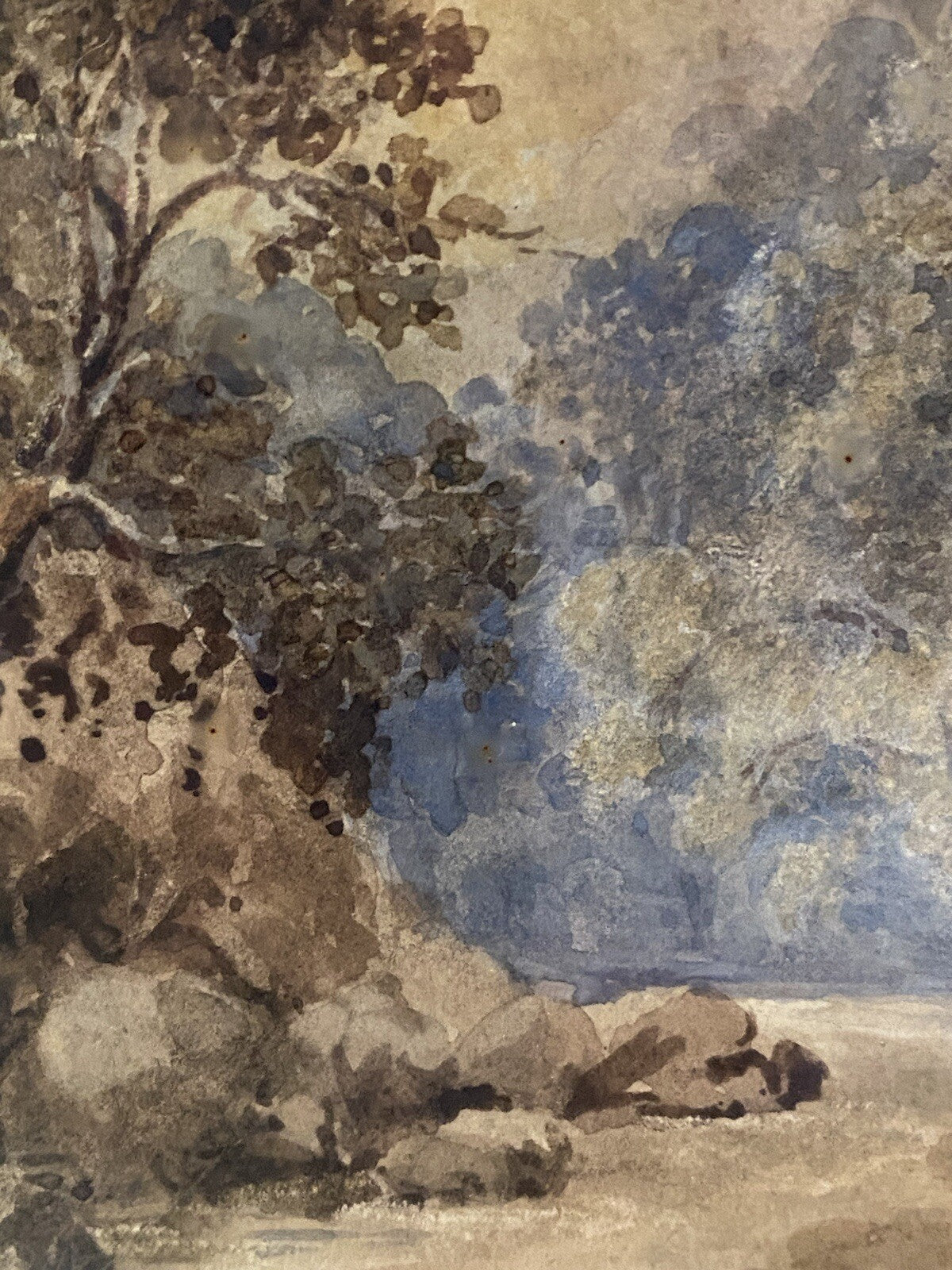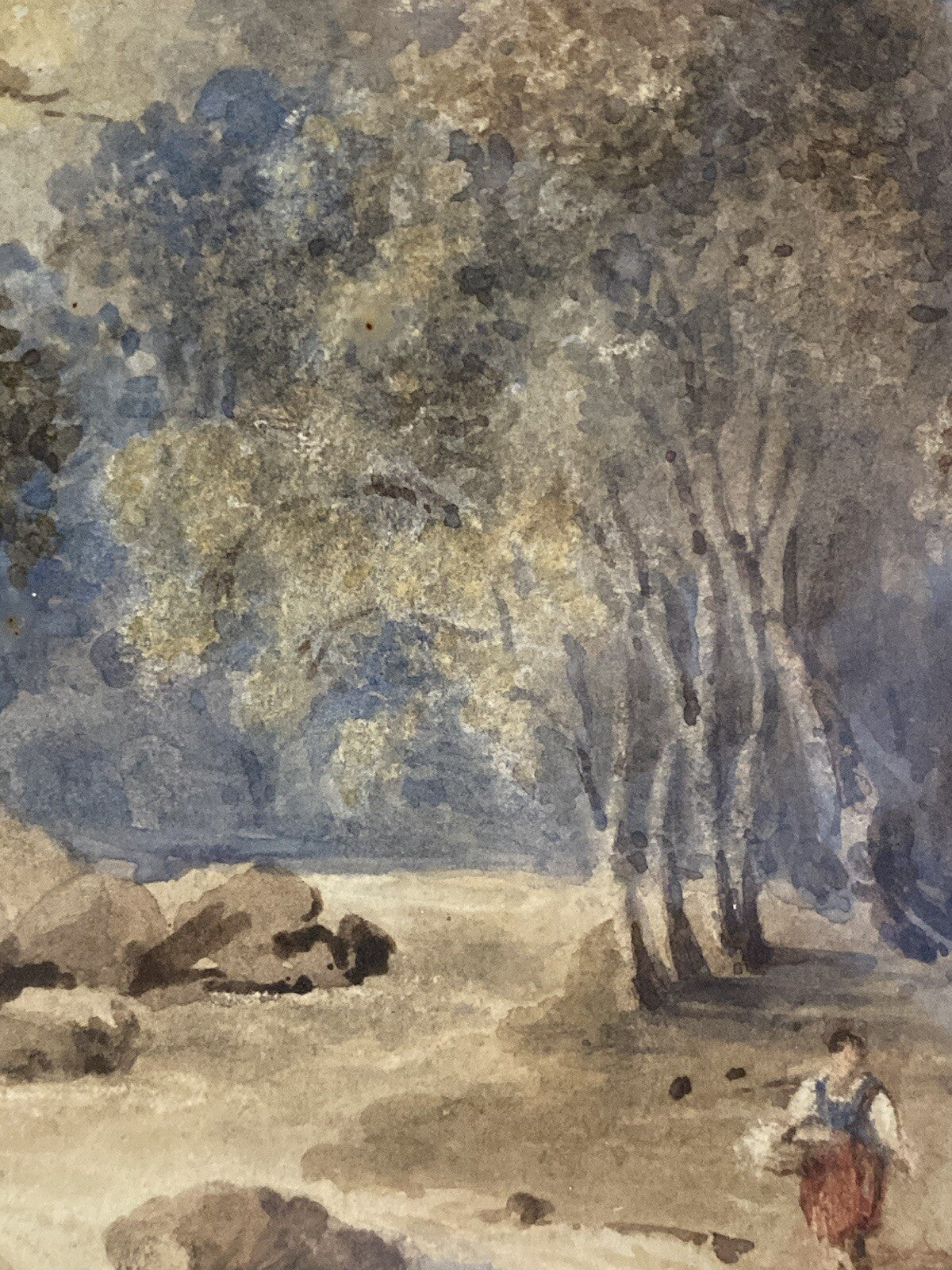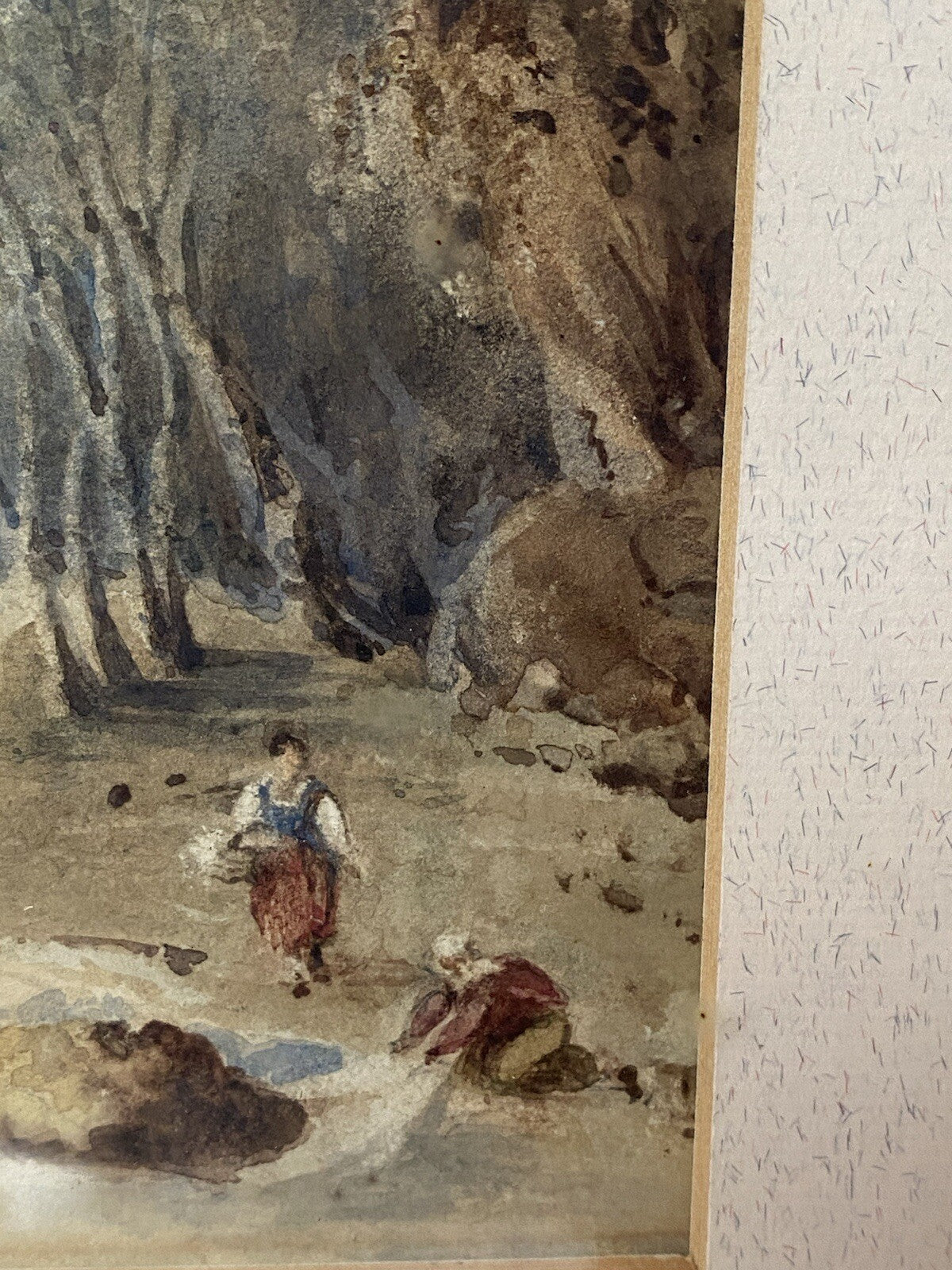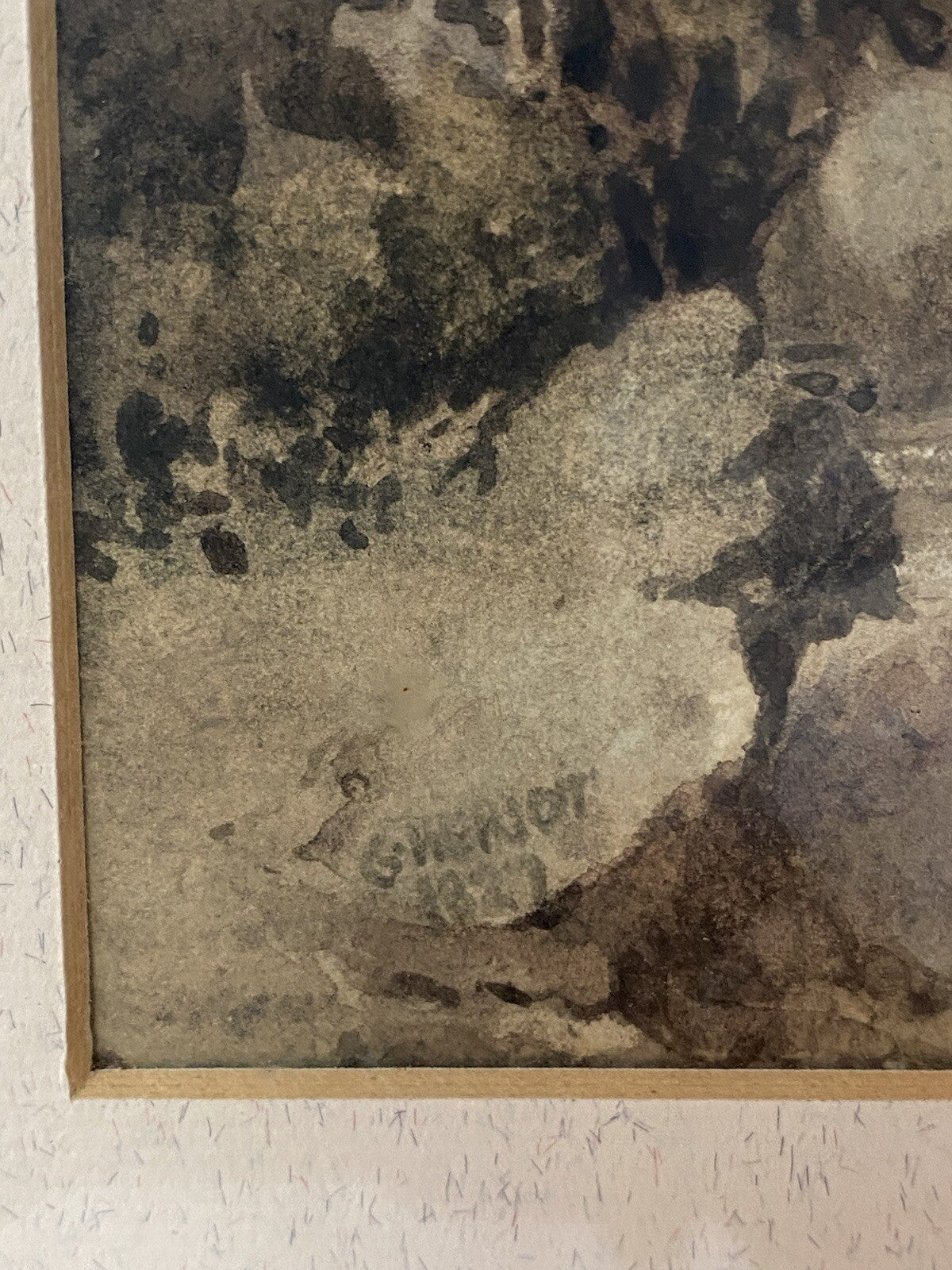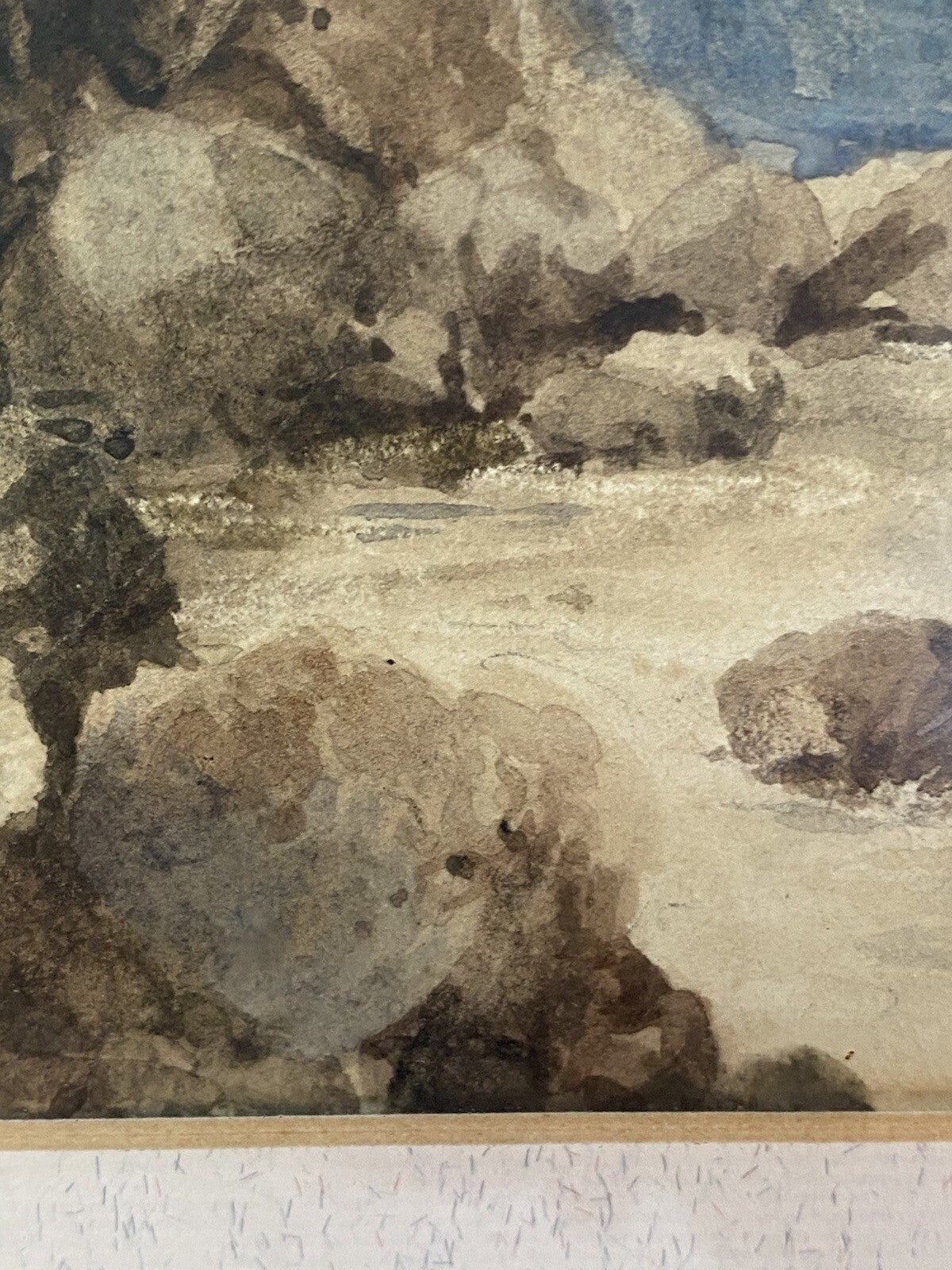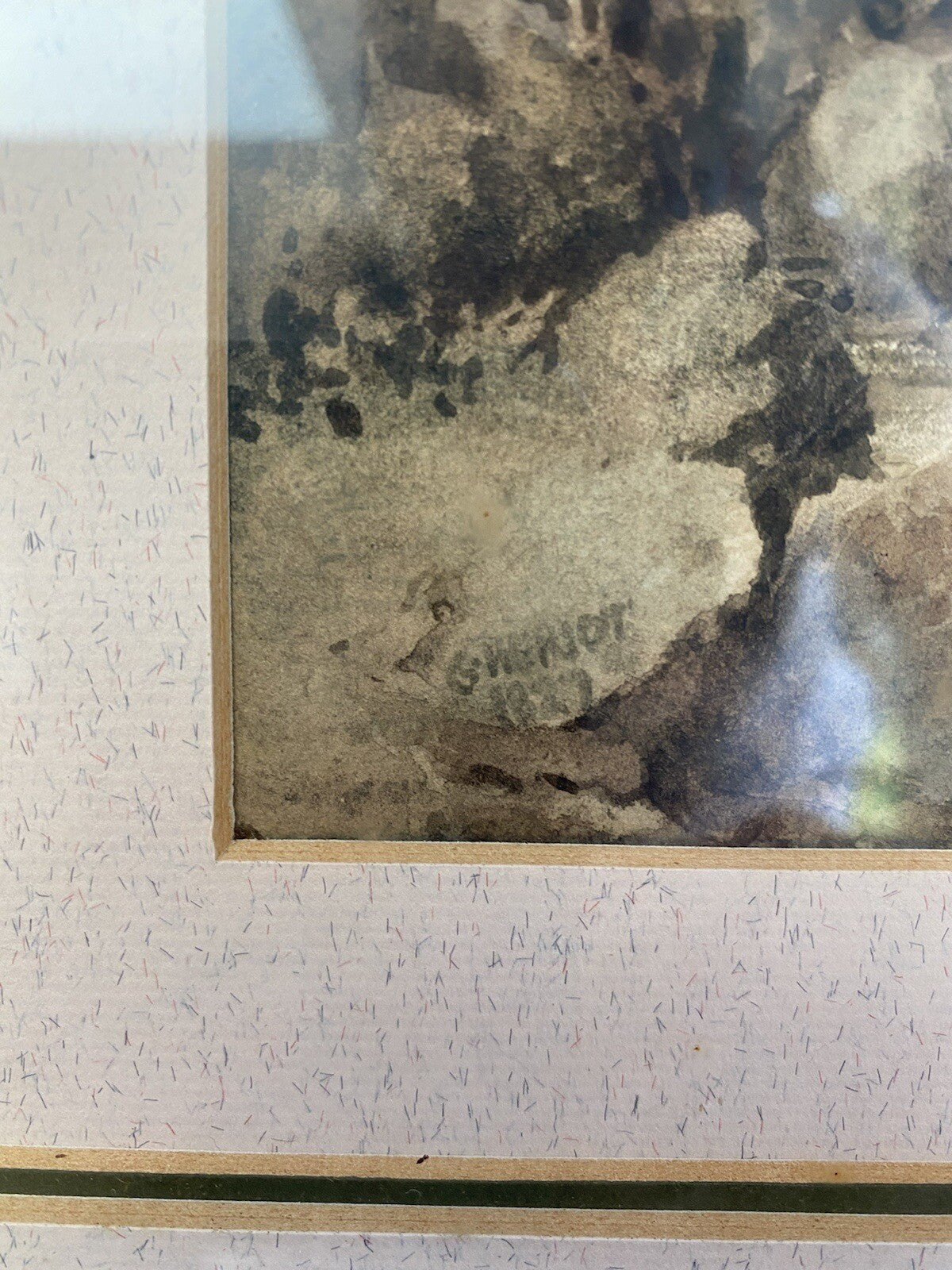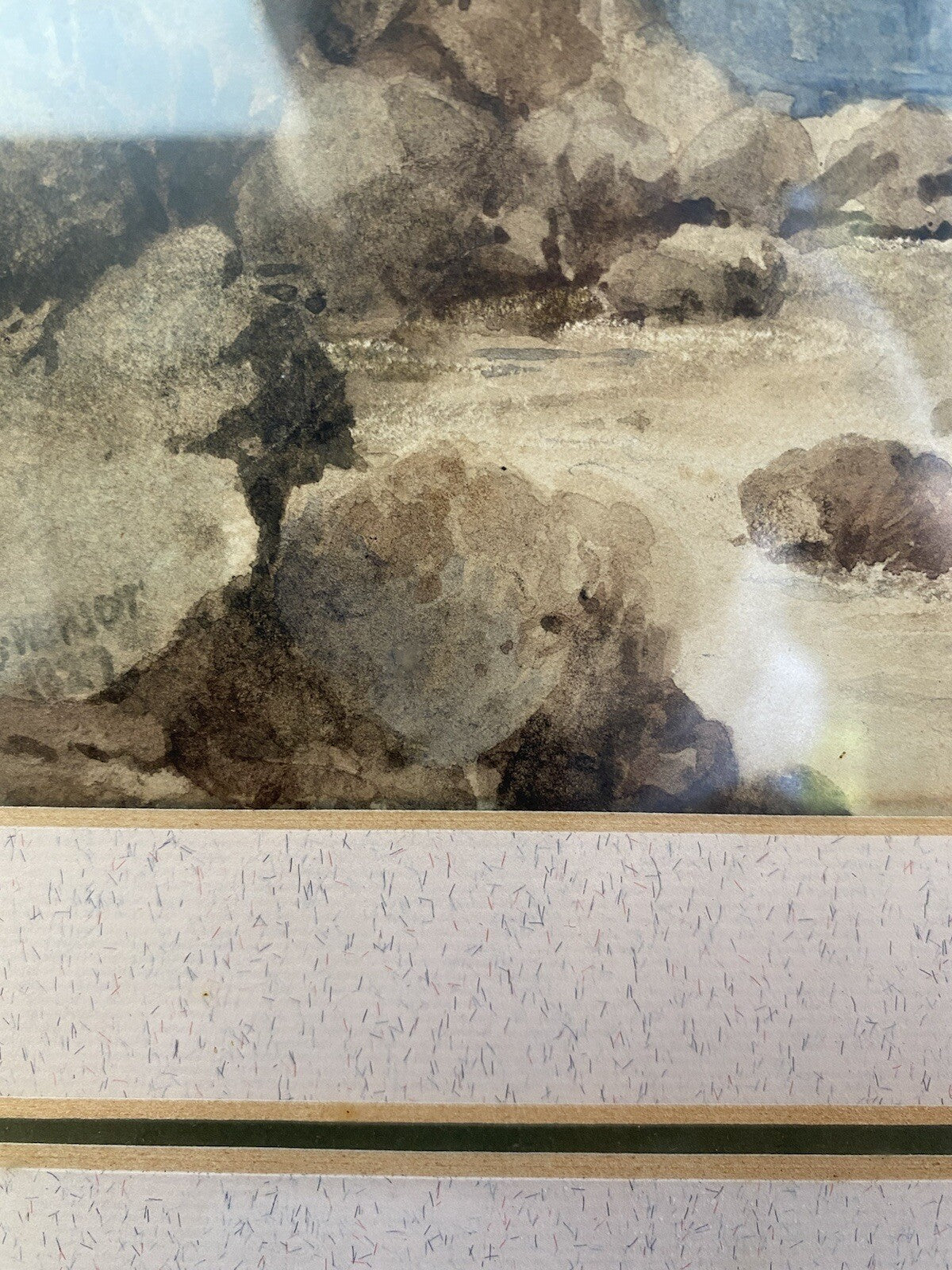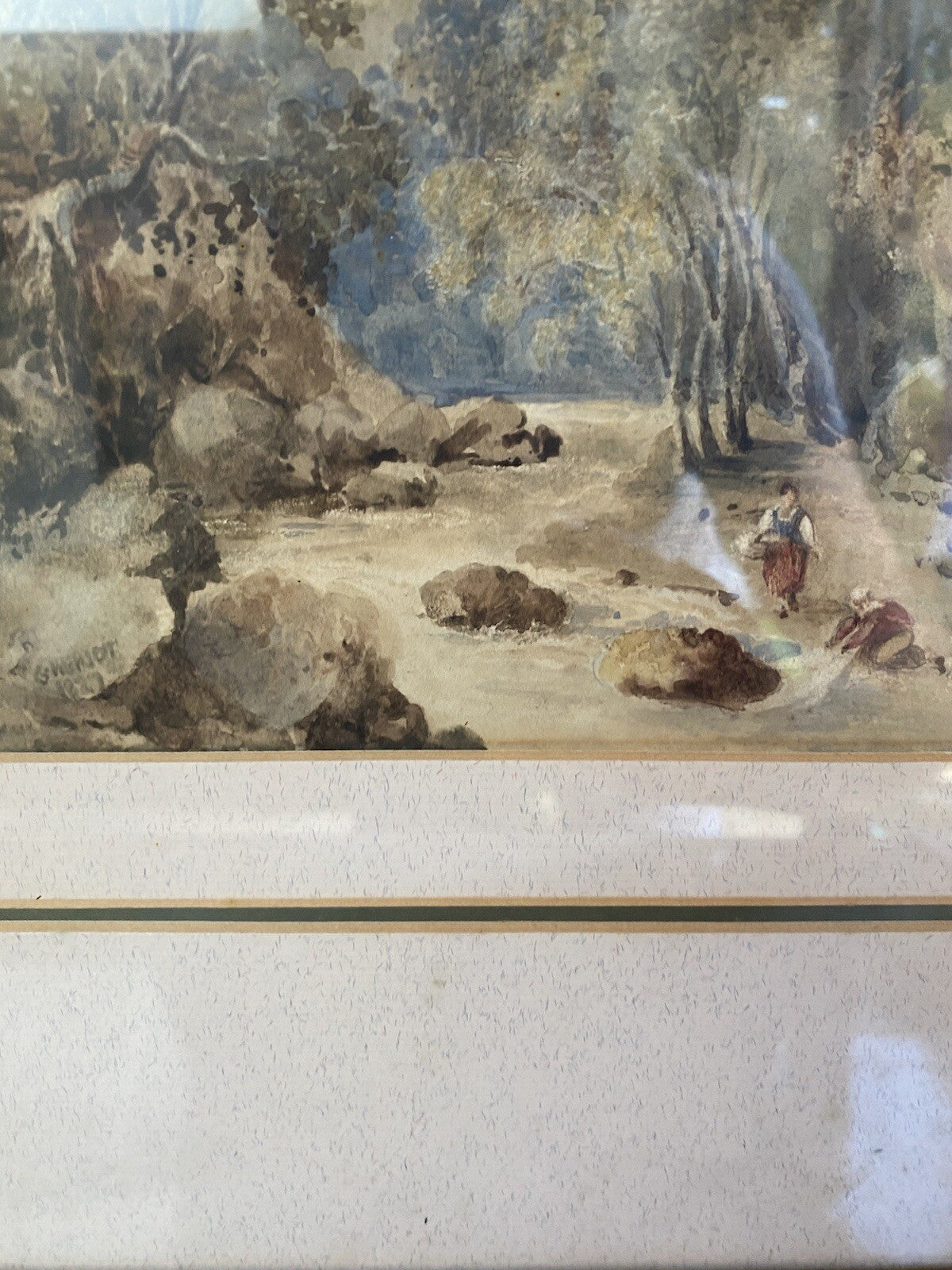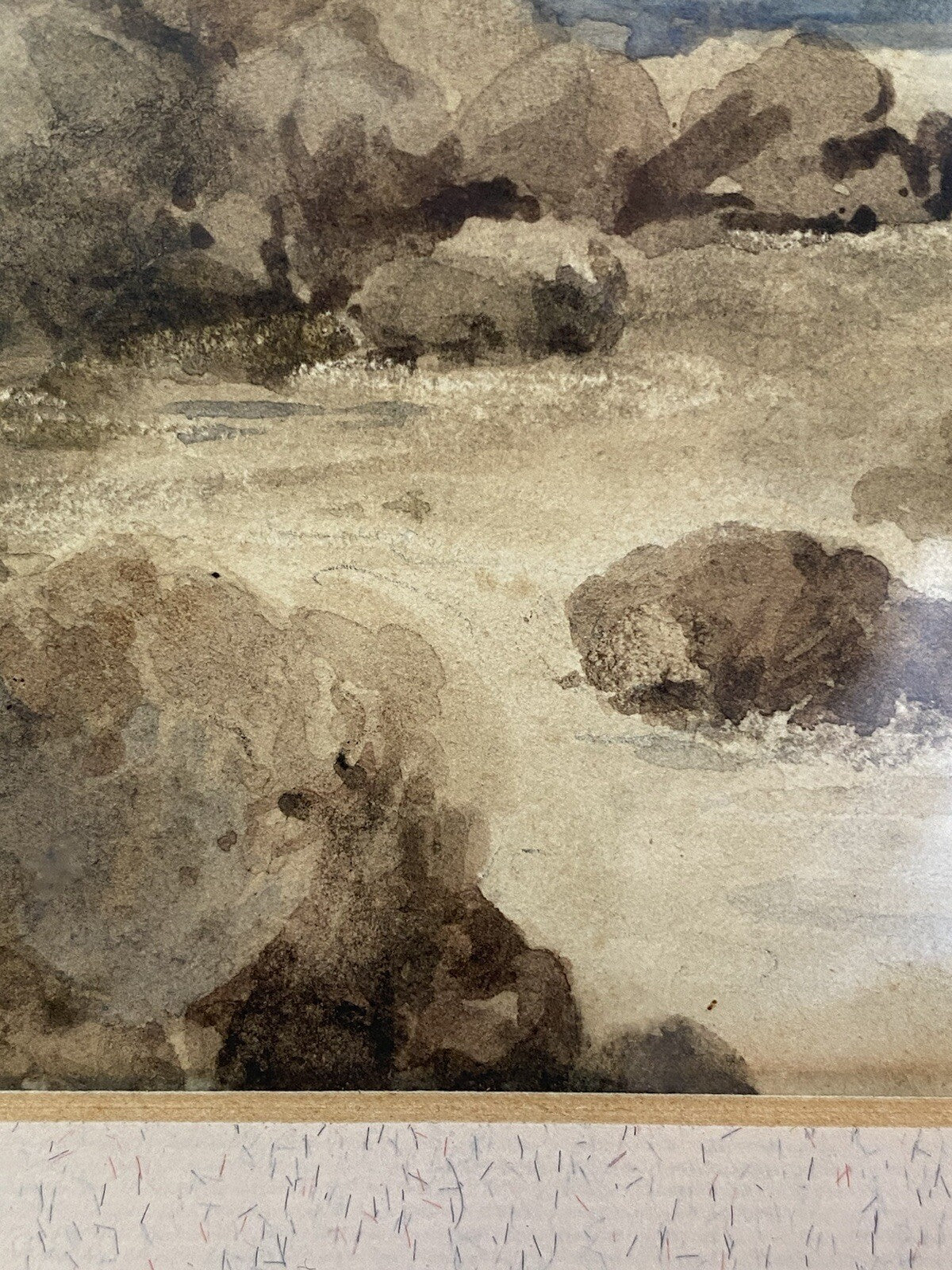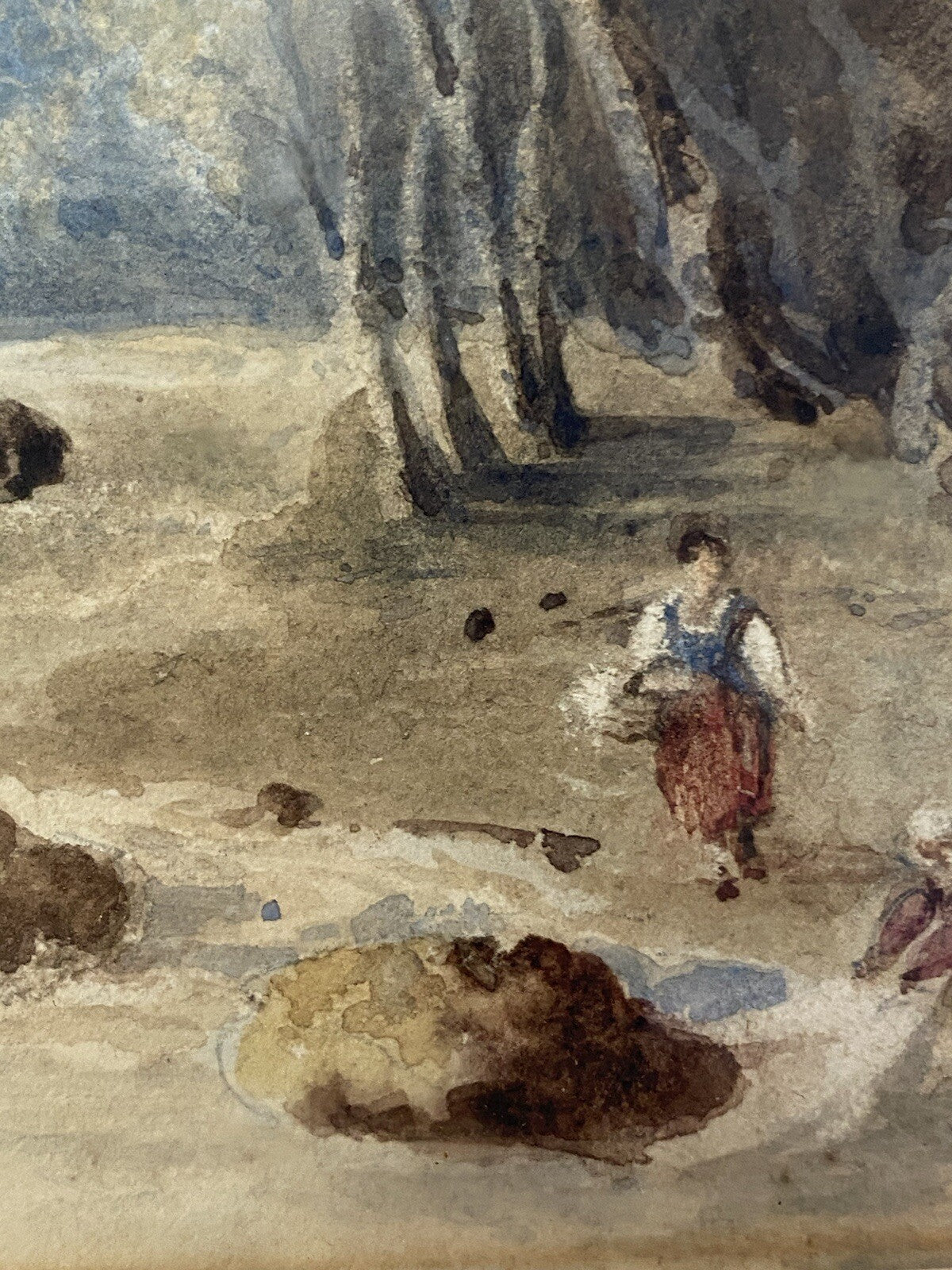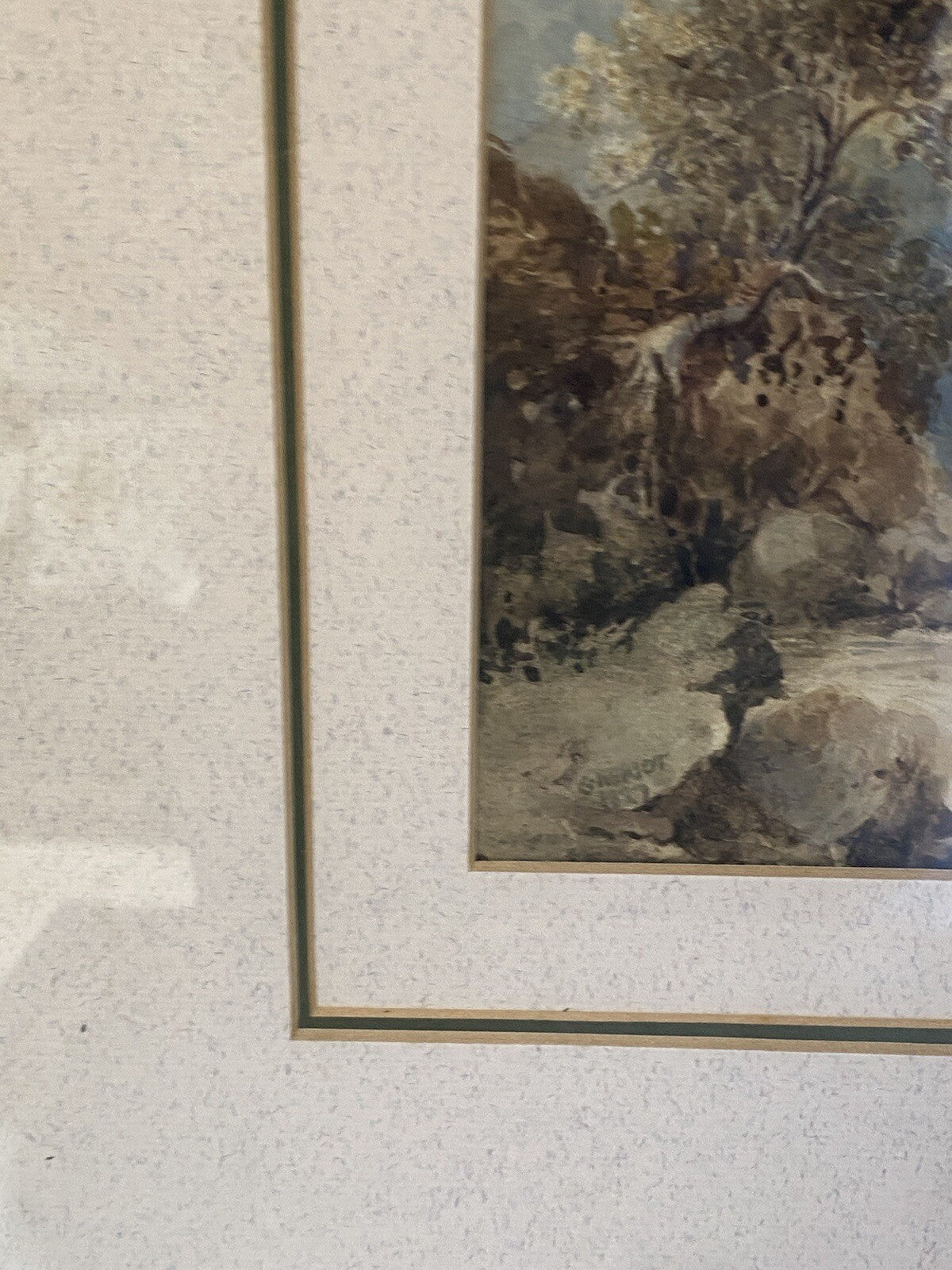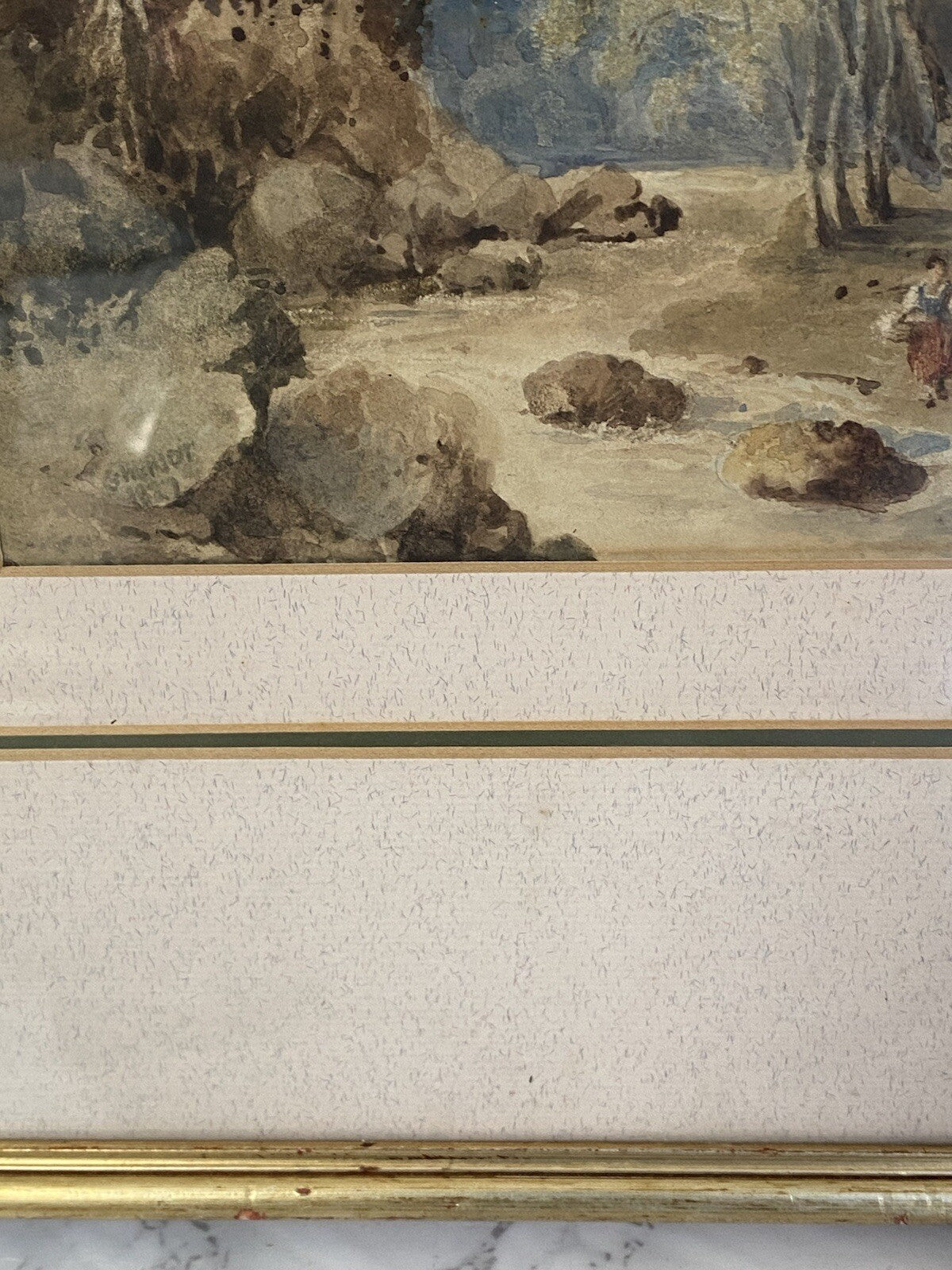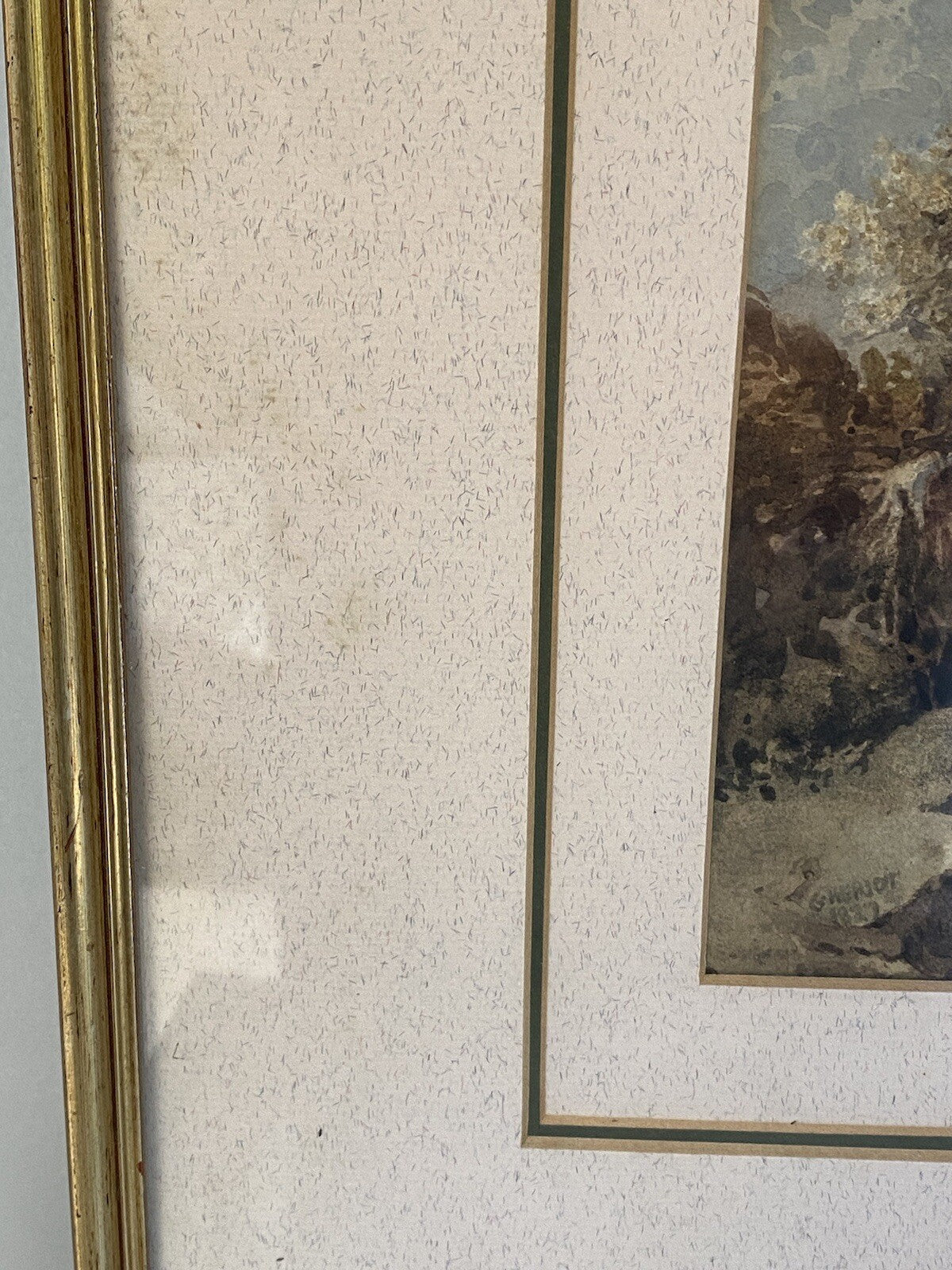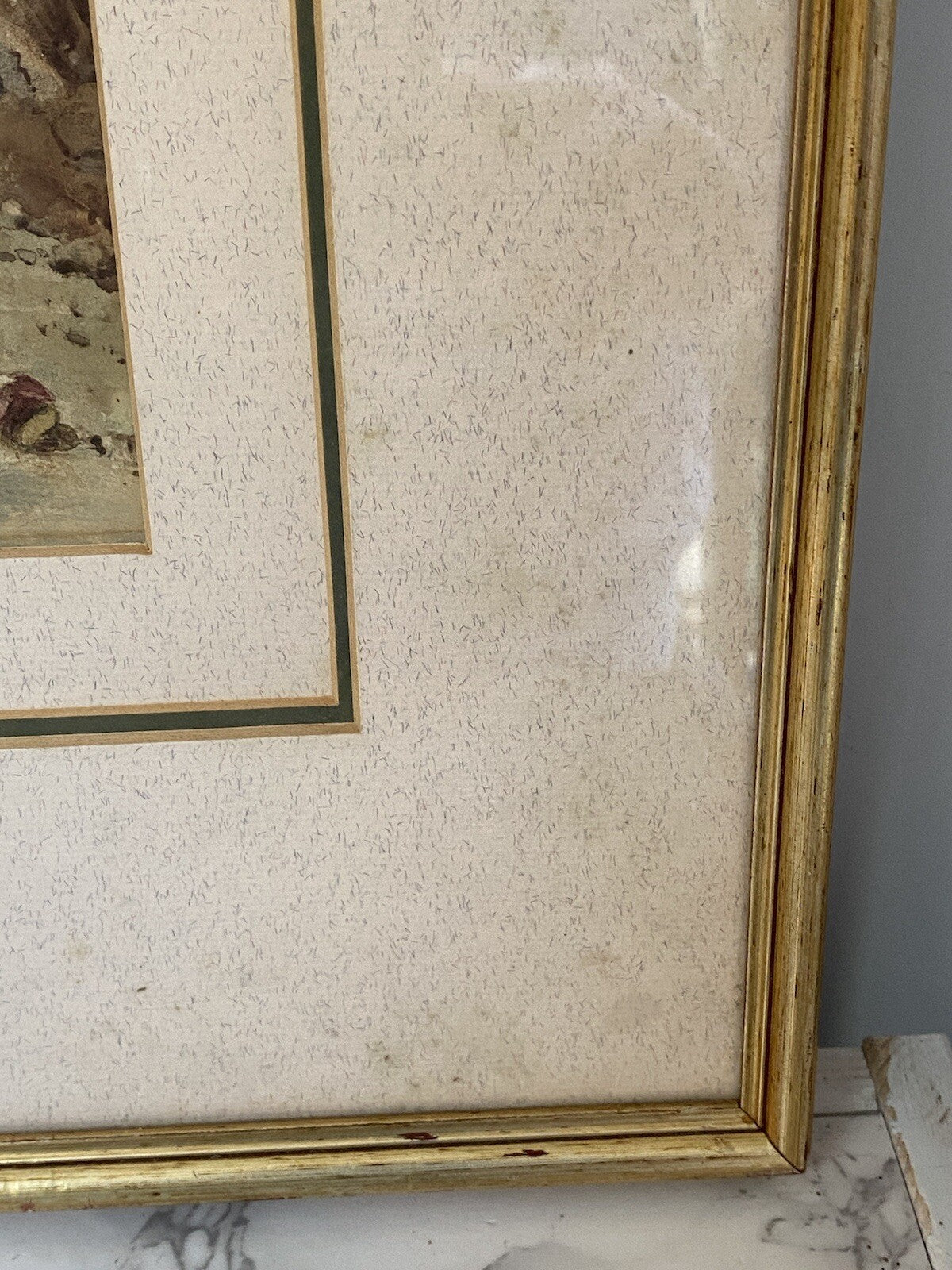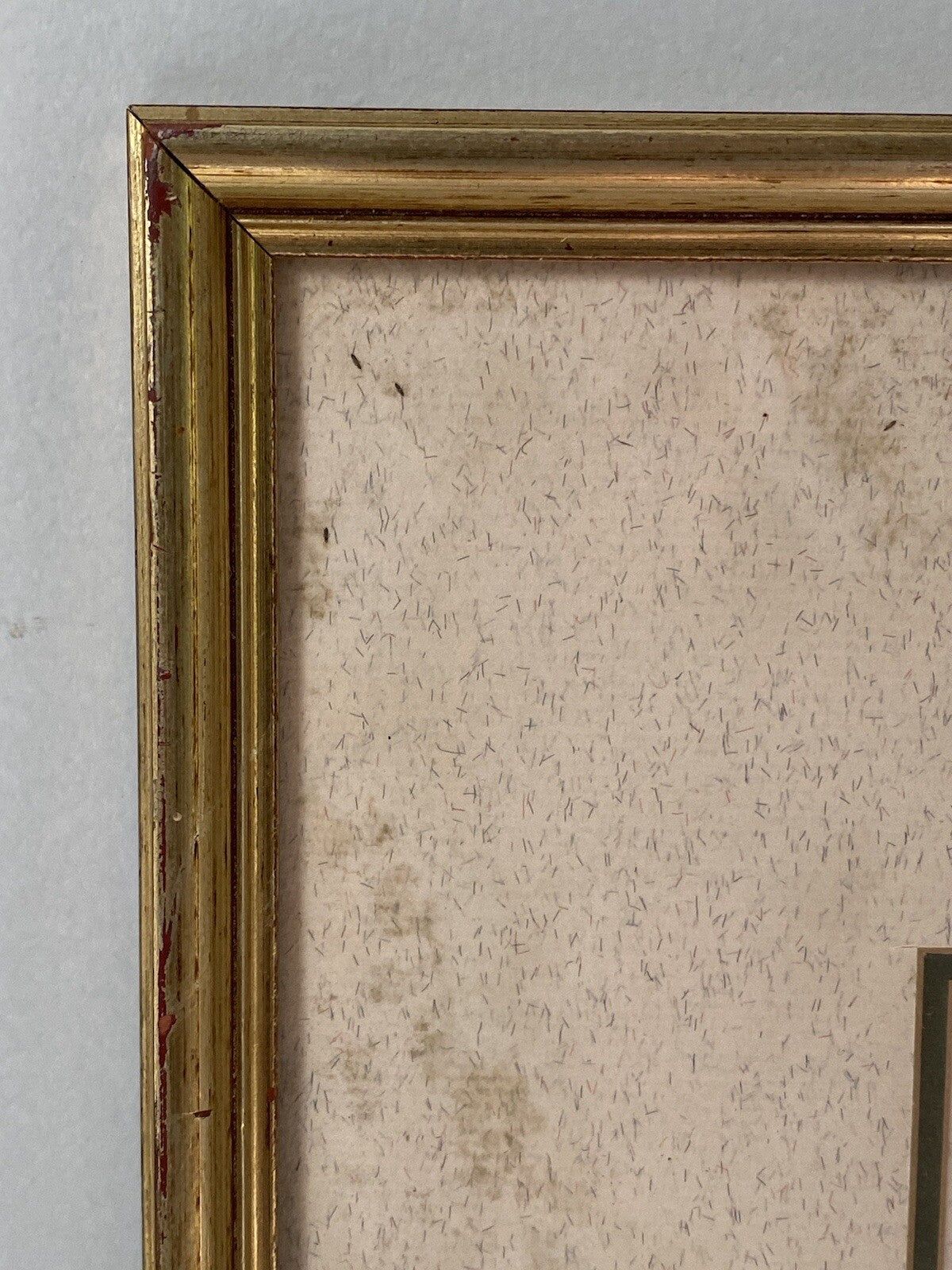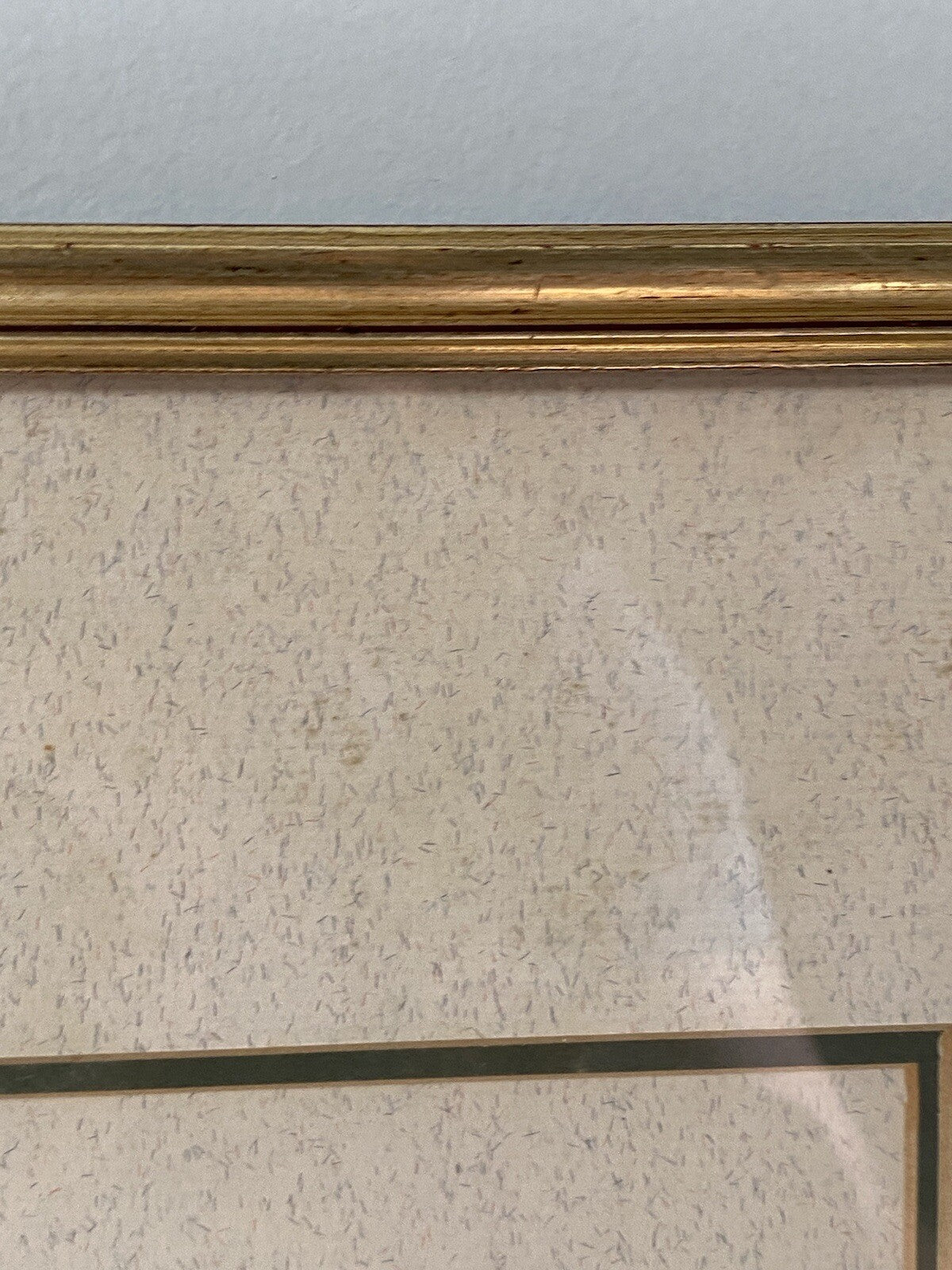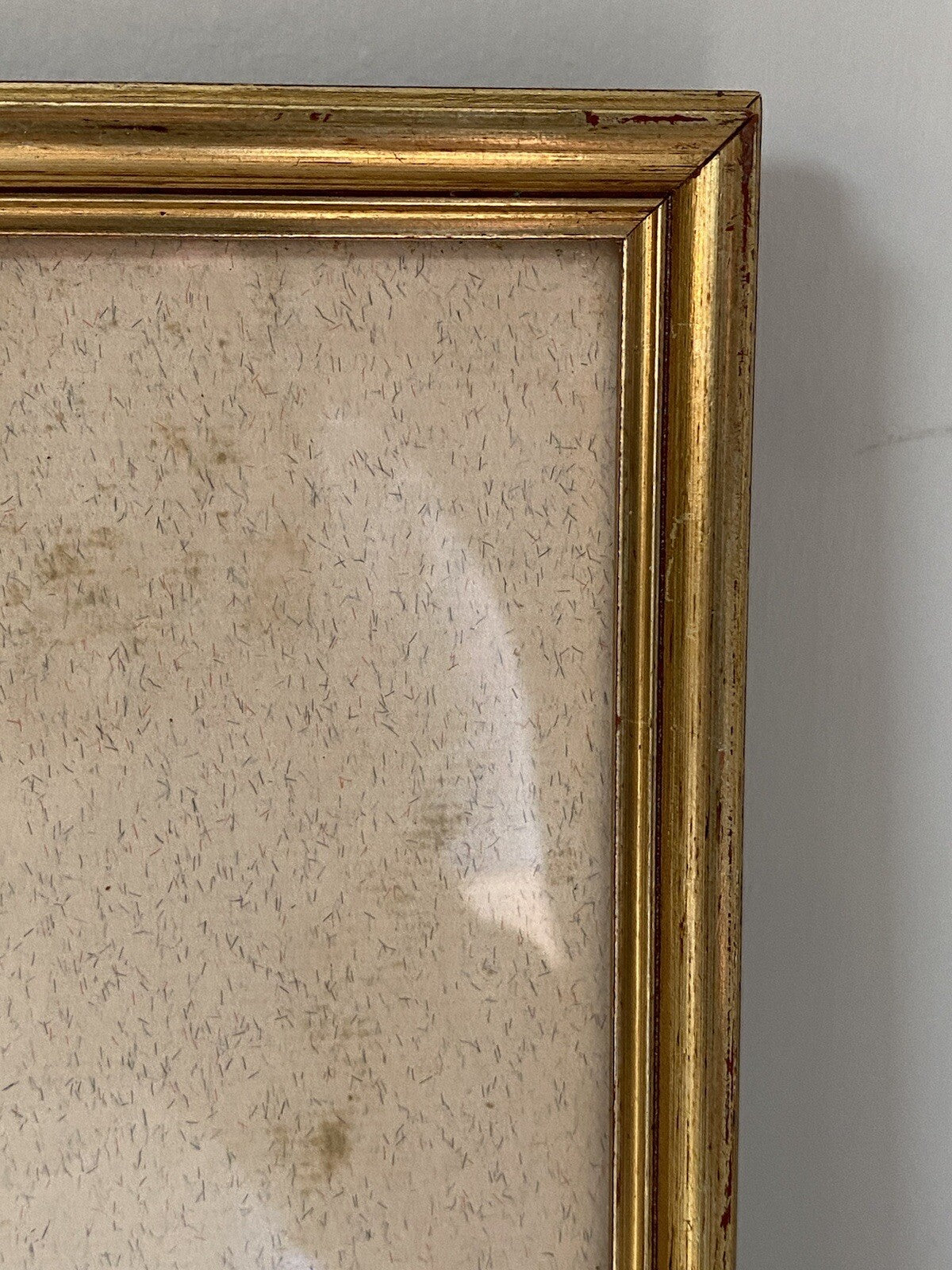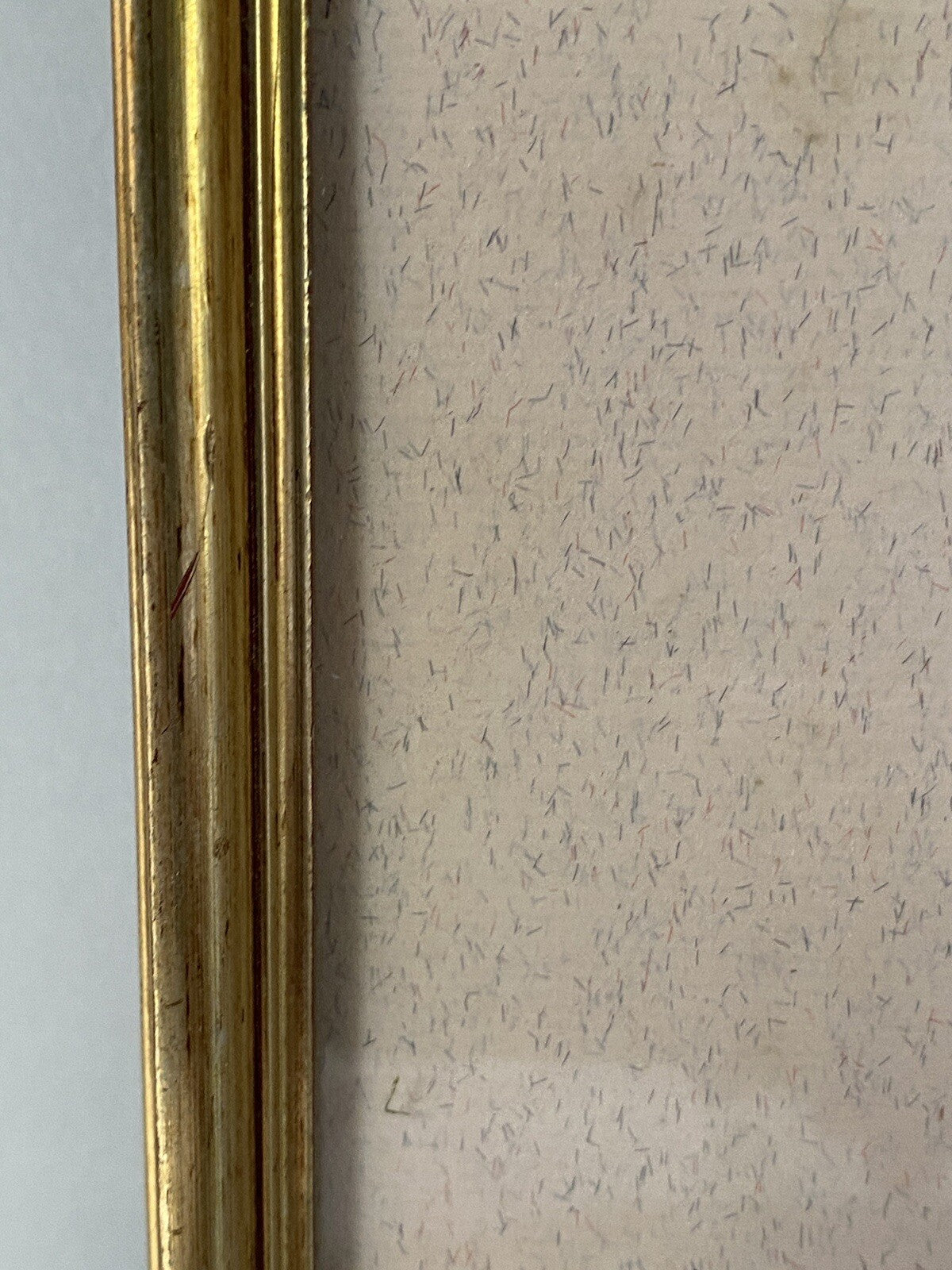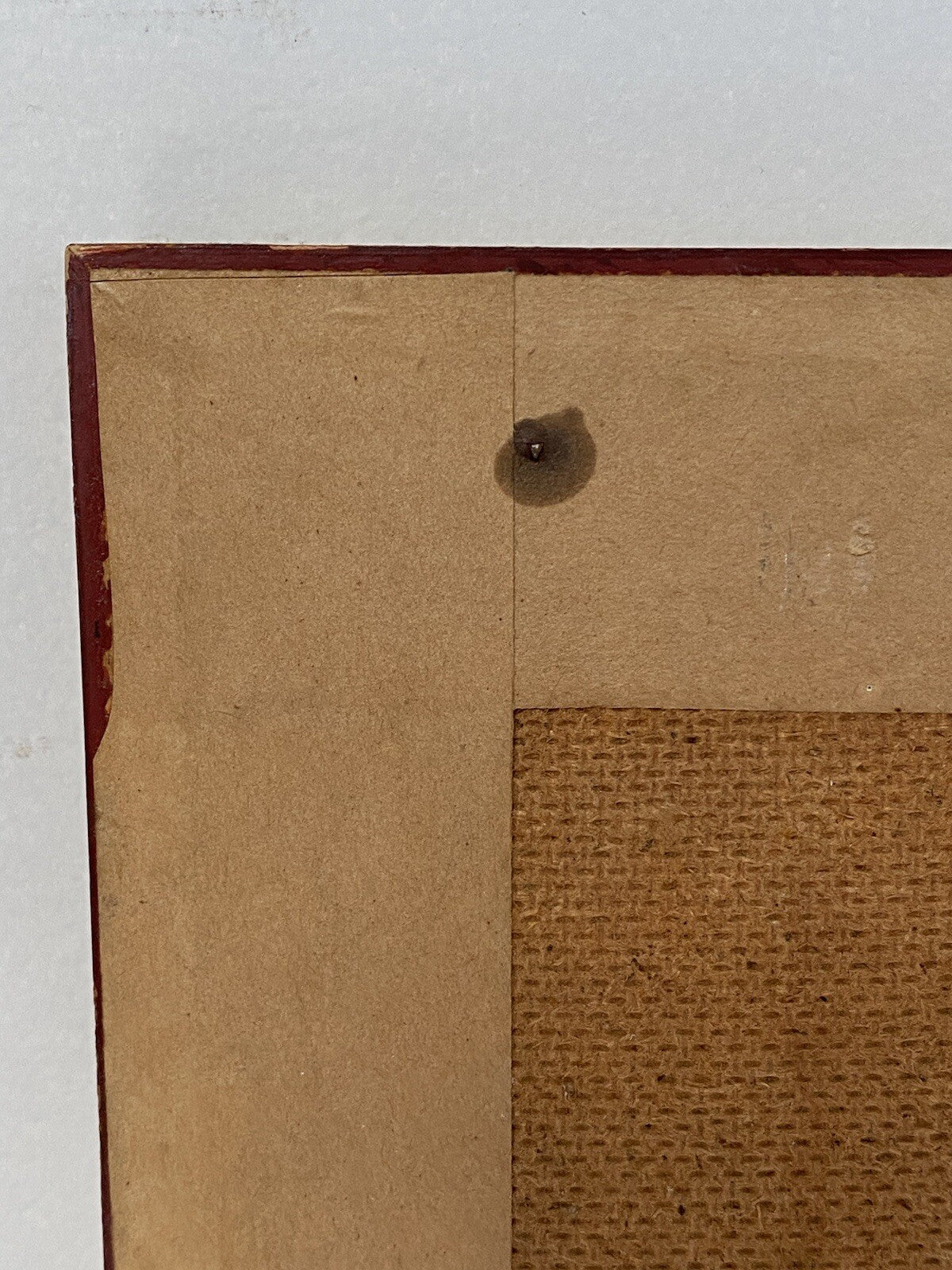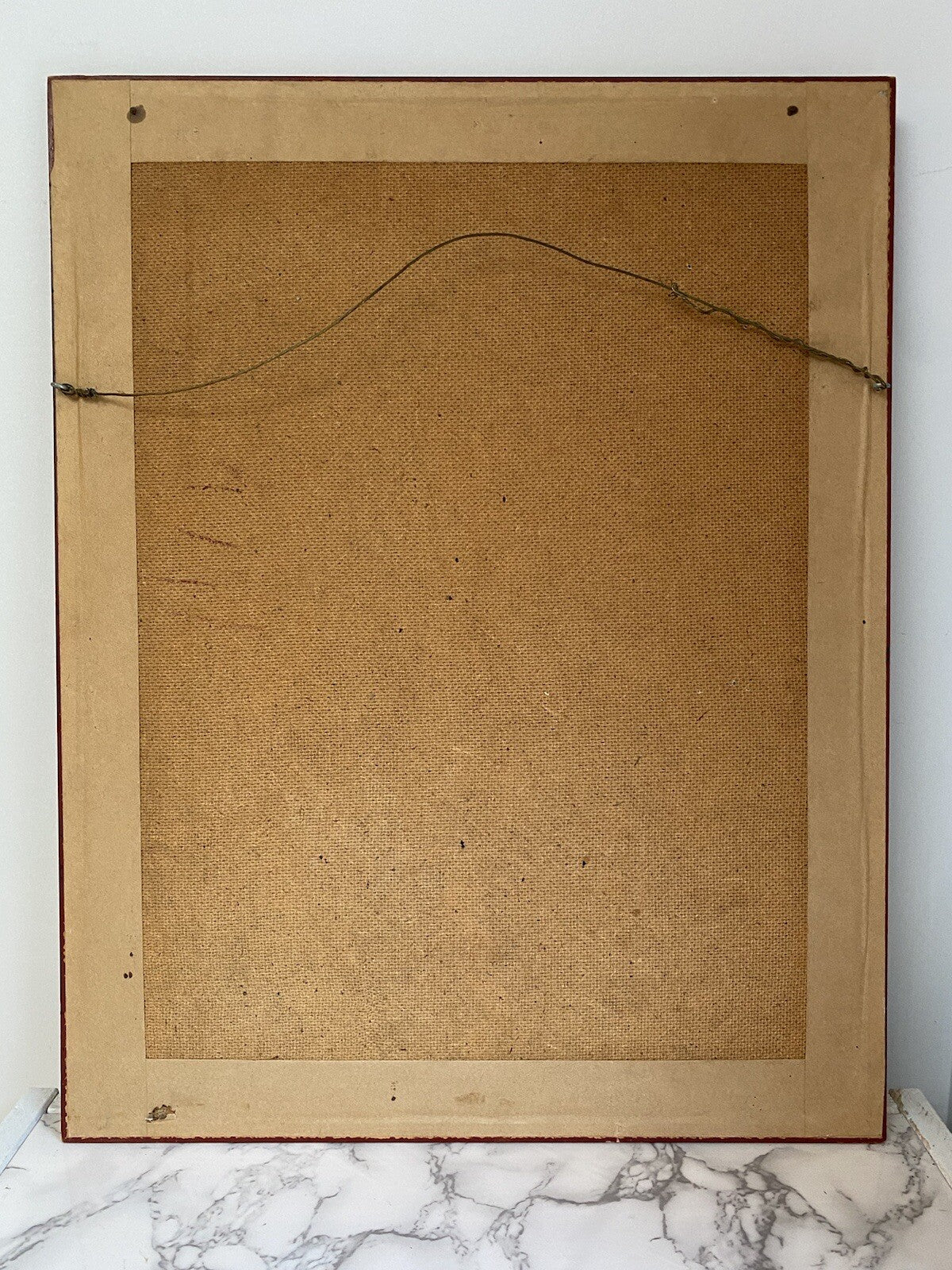PIP
Authentic George Heriot 1827 Watercolour Painting Scottish Highlands Art Georgia
Authentic George Heriot 1827 Watercolour Painting Scottish Highlands Art Georgia
Couldn't load pickup availability
Here is an Authentic George Heriot (1759 - 1839) watercolour painting. This landscape painting depicts two women washing clothes in a stream surrounded by trees in a forest, with what looks like the Scottish Highland Mountains towering above in the background.
Signed G Heriot and dated 1827 bottom left by the artist.
Framed in a nice gold wooden frame, and double card mounted, the mounts have a darker fleck running through them. Framed behind glass.
Please scroll down for some information about the artist taken from the internet.
A guaranteed original authentic painting.
Please view the photographs carefully.
Please view my other items on Ebay for more quality original posters, antiques, and collectibles.
Condition: Very good overall condition, with light foxing marks in the sky area. The colours are fresh. The card mount had some areas of staining, and the frame has some marks and scratches.
Dimensions: cms x cms approximately.
International shipping available.
Bidders from The Isle Of Man, The Channel Islands, USA, Japan, China, Australia, and New Zealand please message me for a shipping quote as it will be more than the price advertised.
I am an experienced seller of original posters, and this item will be well wrapped, and packed with care for delivery.
George Heriot (1759 - 1839) was active and lived in Quebec / Canada, and the United Kingdom. He is known for Painting, sketching, illustration, topography, printmaking.
"In fact he was probably Canada's first resident English-speaking artist." - Dennis Reid
"George Heriot was one of the most important landscape artists in Canada in the 19th century." - McCord Museum of Canadian History.
An early Canadian painter, draftsman, illustrator, printmaker, topographical artist, author and civil servant, George Heriot was born in Haddington, Scotland; lived in Quebec City, Canada from 1792 to 1816; and died in London, England. His life and work are discussed in dozens of Canadian history and art history books; and hundreds of his paintings, drawings and prints are in the permanent collections of Canadian, American and British museums.
His most well-known mediums were watercolors, aquatints*, etchings*, ink and pencil; however he did produce some oil paintings in the 1800s. His subjects were portraits, landscapes, cityscapes, figures, interiors, genre*, marine.
George Heriot was born at Haddington, Scotland, in 1759, the eldest child of John Heriot, the sheriff clerk of the town, and his wife Marjory. The Heriots were part of the long-established family of the Heriots of Trabroun, the most well-known member of which was the seventeenth-century goldsmith and philanthropist George Heriot.[3] He was educated at Duns and the Coldstream grammar school, before attending the Edinburgh Royal High School from 1769 to 1774, where he received a conventional classical education. After leaving the Royal High School he remained in Edinburgh, where he studied art under the encouragement of Sir James Grant.
In 1777 he travelled to London, apparently with the intention of beginning an artistic career, but instead found himself on a voyage to the West Indies. It is not known why he changed his plans, but his father's business had failed that year, causing his younger brother John to quit university and join the Army. He wrote and sketched extensively during his time in the Caribbean, and when he returned to London in 1781 he published A Descriptive Poem, written in the West Indies. On his return, he enrolled at the Royal Military Academy, Woolwich. Here, he was instructed in art and taught landscape drawing and painting, then considered an essential part of a military education, by Paul Sandby. Woolwich training in art also was an indispensable part of the education of other military men who were artists such as James Pattison Cockburn, Philip John Bainbrigge and John Herbert Caddy).
He had left the academy by 1783, but remained in Woolwich, employed as a civilian clerk by the Army. In 1792, he was posted to Quebec, as a clerk in the ordnance office there.
Share
